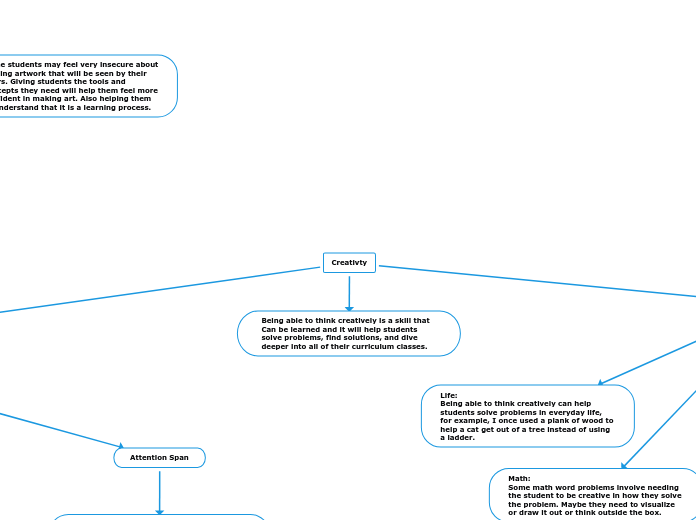por Kessandra Sanderson 4 anos atrás
263
Creativty

por Kessandra Sanderson 4 anos atrás
263

Mais informações
My students would in the social contract and authority and social order stages. Students would be focused on fixed rules and mutual benefit.
Since the students I will be teaching will more than likely be in the formal operational stage, students would be able to use symbols to relate to abstract concepts and able to make hypotheses and grasp abstract concepts and relationships. This is a great stage to work with symbolism and abstract ideas in art!
Girls are more likely to do the work in order to please the teacher, but they may be more sensitive in sharing or showing their work with the class.
Boys do better work when they work “shoulder to shoulder” with peers or with a teacher. Boys are also more likely to do the work if they have interest in it, they wont just do the work to please the teacher.
Using creativity to create better compositions in drawings, paintings, illustrations, etc.
Students can use ideas such as focal point, negative/positive space, balance, and the golden ratio to improve compositions.
Correlation Features: A composition rules based on a math principle (rule of thirds, focal point) A composition rule based on line (texture) A composition rule based on color/value (pattern)
Possible Misconceptions
Overgeneralization: Copying someone’s work or ideas is creative
Undergeneralization: Pattern and line weight are not part of creative concepts
Prototype: Mona Lisa
Assessment
Post-assessment Have students use their knowledge on creative design and composition to make a full size mock movie poster.
Pre-assessment: Have students design quick thumbnails of a movie poster before teaching them about creative design and compositions.
Golden Ratio or the rule of thirds: A mathematical principle that helps artist with their compositions. Helps artist place their focal point in their art work.
Balance: Using things like texture, shapes, color, and values to make sure your artwork is visually balanced.
Negative and positive space: Positive space would be things like the actual object (the person’s face, the horse,etc) while negative space are the shapes in the background created by the positive space or objects.
Focal Point: Spot in the artwork where the viewers eyes are naturally drawn.